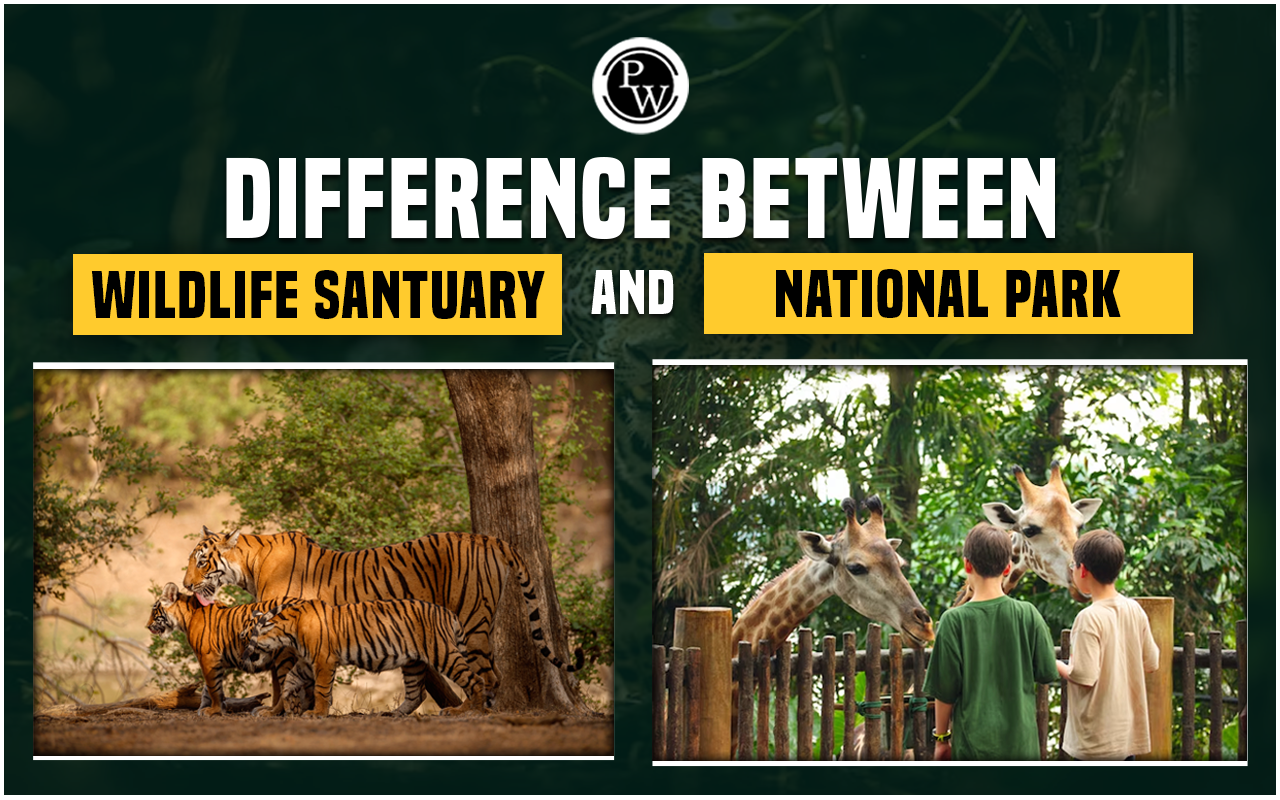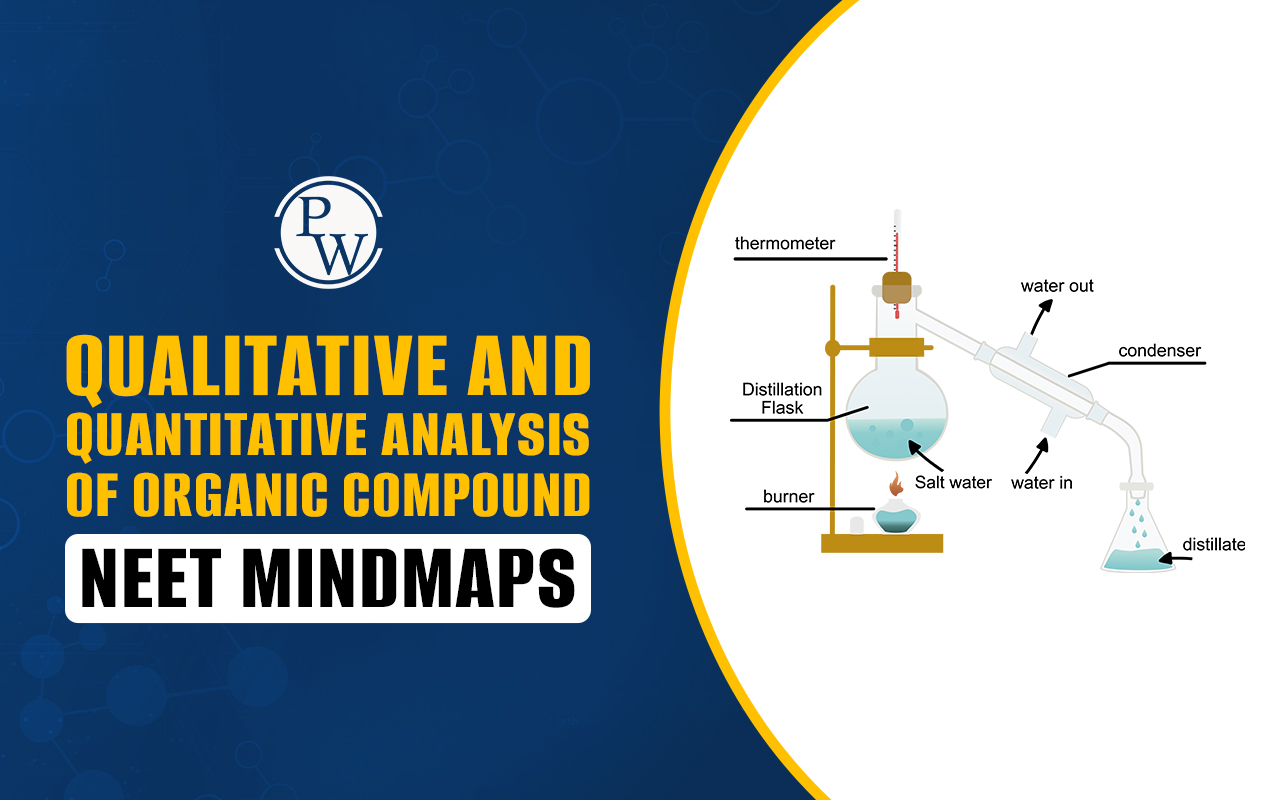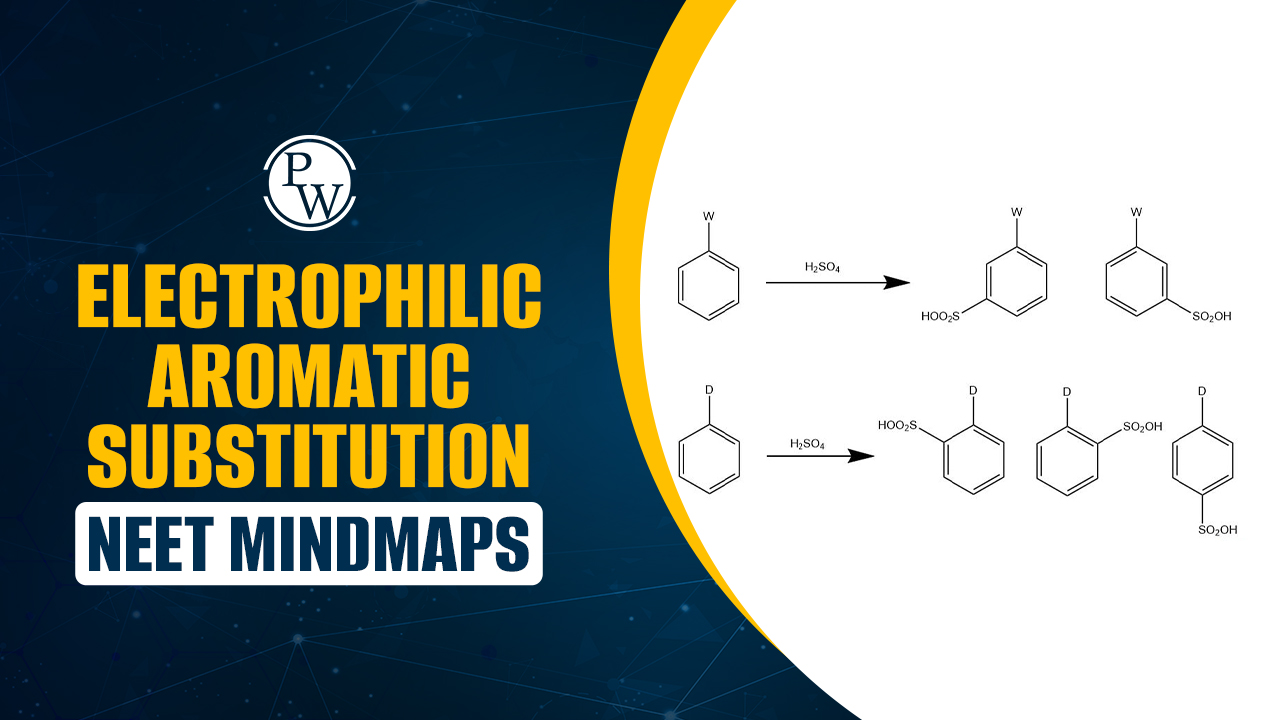

Difference Between Wildlife Sanctuary and National Park: Wildlife sanctuaries and national parks are designated areas important for biodiversity conservation. Wildlife sanctuaries focus on protecting specific species within their natural habitats.
They often impose strict regulations to minimize human disturbance. With a broader scope, national parks aim for wildlife conservation, public recreation, scientific research, and landscape preservation. Read this article for a detailed explanation of the difference between national park and wildlife sanctuary, national park and wildlife sanctuary difference, and difference between national park and sanctuary.
| NEET Biology MCQ | NEET Biology Diagrams |
Difference Between Wildlife Sanctuary and National Park: Overview
A wildlife sanctuary is a protected environment dedicated to preserving particular animal and bird species. In contrast, a national park is a protected area that aims to conserve wildlife and the entire ecosystem. National parks are generally larger in scale than wildlife sanctuaries, and they entail a higher level of protection, with more stringent limitations on human activities. The primary emphasis of wildlife sanctuaries is on the conservation and protection of specific animal species. At the same time, national parks adopt a broader goal, striving to preserve the entirety of natural resources.
As a result of their comprehensive ecosystem-focused approach, national parks typically exhibit a more extensive array of animal species than wildlife sanctuaries. This is an important national park vs sanctuary distinction often highlighted in environmental studies.
For NEET aspirants, understanding these differences aligns with topics covered in NEET Biology Chapter-wise Weightage and is supported through NEET Biology Notes and NEET Previous Year Question papers, which often include related questions.
Difference Between Wildlife Sanctuary and National Park
In environmental conservation, wildlife sanctuaries and national parks play different roles. Wildlife sanctuaries are established to protect specific species. They restrict human activities to minimize disturbances. In contrast, national parks have a broader purpose. It encompasses wildlife conservation, recreation, and landscape preservation. While both aim to safeguard nature, wildlife sanctuaries focus on targeted species that ensure survival. National parks pursue a broader approach. They preserve entire ecosystems, diverse landscapes, and cultural resources. The complete national park vs wildlife sanctuary and national park vs sanctuary difference is given below in the table.| Difference Between Wildlife Sanctuary and National Park | ||
|---|---|---|
| Basis | Wildlife Sanctuary | National Park |
| Purpose | A wildlife sanctuary primarily aims to conserve and protect specific wildlife species. | The primary purposes of a national park are wildlife conservation, recreation, and landscape preservation. |
| Human Activities | Restricted to minimize disturbances to wildlife. | Regulated recreational activities like hiking, camping, and wildlife watching. |
| Management Focus | Its primary focus is on the conservation and protection of wildlife. | Its primary focus is on preserving ecosystems, landscapes, and cultural resources. |
| Size and Boundaries | It varies in size, often smaller and localized. | It is larger, covering diverse ecosystems and landscapes. |
Wildlife Sanctuary
Wildlife sanctuaries are protected areas where wildlife, including birds and animals, are kept safe and secure in their natural habitats. They are protected from prohibited activities such as poaching and trafficking. Wildlife sanctuaries are natural reserves, biosphere reserves , and conservation areas. Wildlife sanctuaries are important for research and study purposes. They are privately owned by research institutes and organizations and are controlled by government. Killing, poaching, or capturing any of the animals or birds that live in these areas is strictly prohibited. Wildlife sanctuaries were primarily established to save endangered species. Not only are human activities prohibited in these areas, but disruptions are also prohibited. Disturbing the areas around wildlife habitats is not permitted. India has over 543 wildlife sanctuaries, covering a total area of 118,918 square kilometers. Wildlife sanctuaries aim to conserve both the animals that live there and their natural habitats.- Conserve wildlife: Endangered animals are protected in their natural habitat, where they can be closely observed, breed, and increase in population under the sanctuary's strict supervision.
- Protect landscapes: Wildlife sanctuaries provide space for animals to live and prohibit human interference in these areas.
- Preserve biodiversity: Sanctuaries keep people and their potentially harmful activities away from the region, preserving all its species.
- Promote ecotourism: Visitors to wildlife sanctuaries must be accompanied by a licensed guide. Ecotourism involves visiting environmentally stunning locations to observe and assist in animal conservation.
National Park
A national park is a place that has been set apart and is guarded by the government to safeguard and preserve the flora and fauna. It also protects the local environment and historical items. Hunting, needless mobility, and animal grazing are prohibited in the national parks. India has several national parks; the first Reserve Forest of India is the National Park in Satpura. This forest has the best teak wood that has been conserved. The importance of national parks is given below:- Biodiversity Conservation: Preserves diverse flora and fauna, prevents species extinction.
- Habitat Protection: Safeguards natural habitats, shields wildlife from human-induced threats.
- Endangered Species: Focuses on saving endangered species, helps in their recovery and survival.
- Education: It serves as an educationall hub, raises awareness about biodiversity and conservation.
- Economic Benefits: Contributes to local economies through eco-tourism.
Understanding the difference between national park and wildlife sanctuary is important for students preparing for exams like NEET, where topics related to the NEET Biology Syllabus, NEET Biology Diagrams, and NEET Biology MCQ often include these concepts.
Physics Wallah offers a variety of NEET online courses that can help candidates crack the NEET exam. PW NEET Online Coaching program includes regular assessments, mock tests, and doubt-clearing sessions.Difference Between Wildlife Sanctuary and National Park FAQs
Which is the largest national park in India?
What is the smallest national park?
What are the similarities between national parks and wildlife sanctuaries?
Is a zoo a wildlife sanctuary?
Is the Sundarbans a wildlife sanctuary?
What is a Hypotonic solution?












